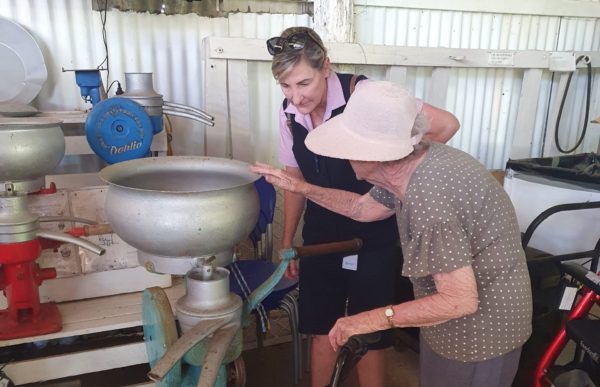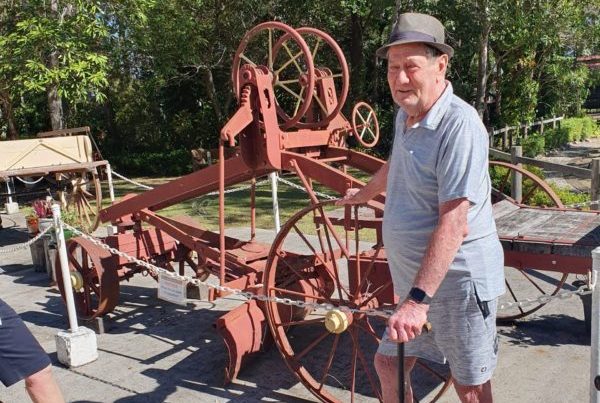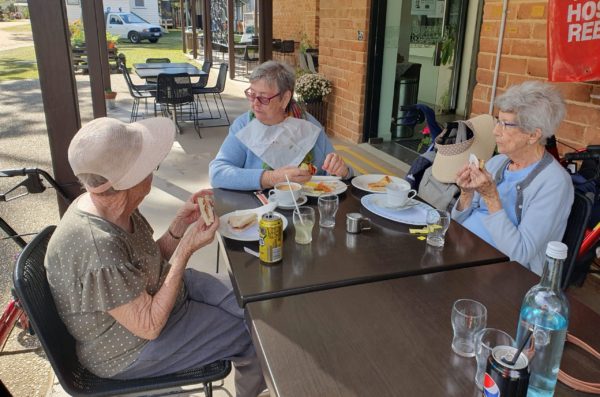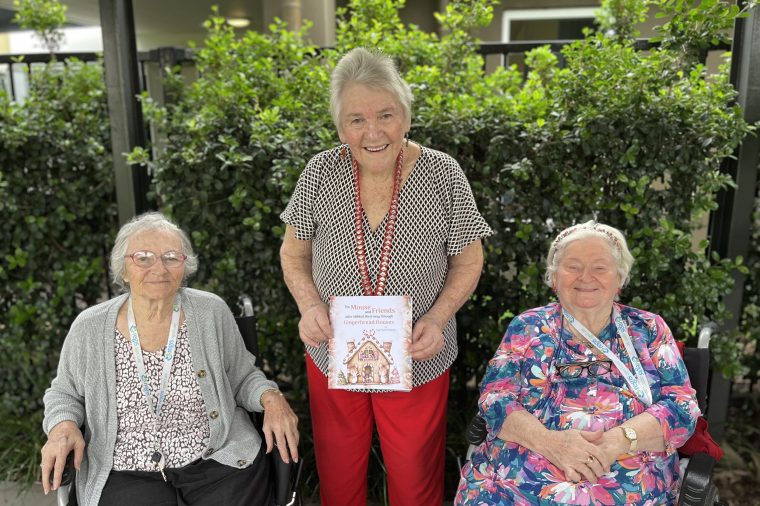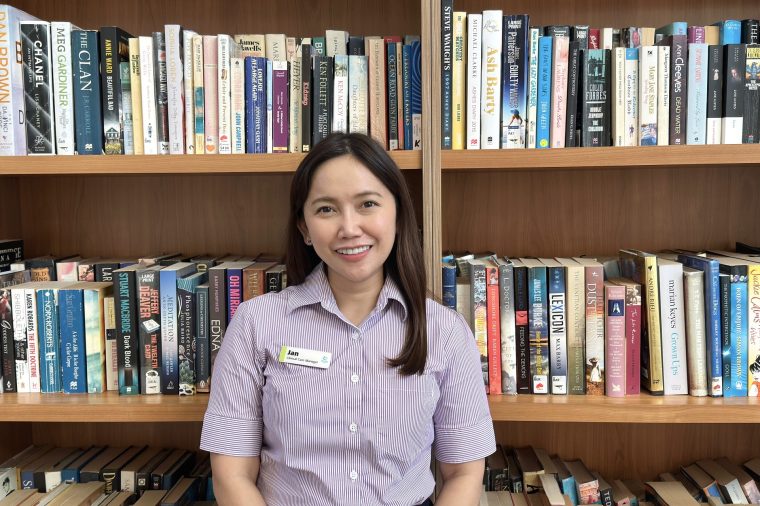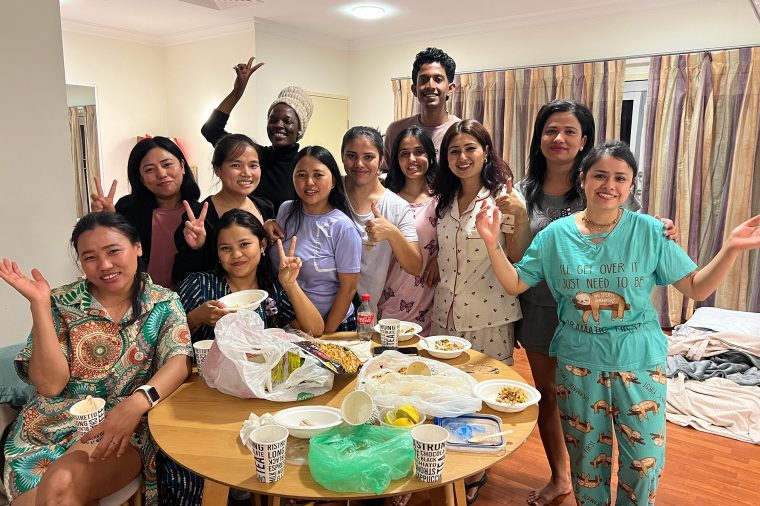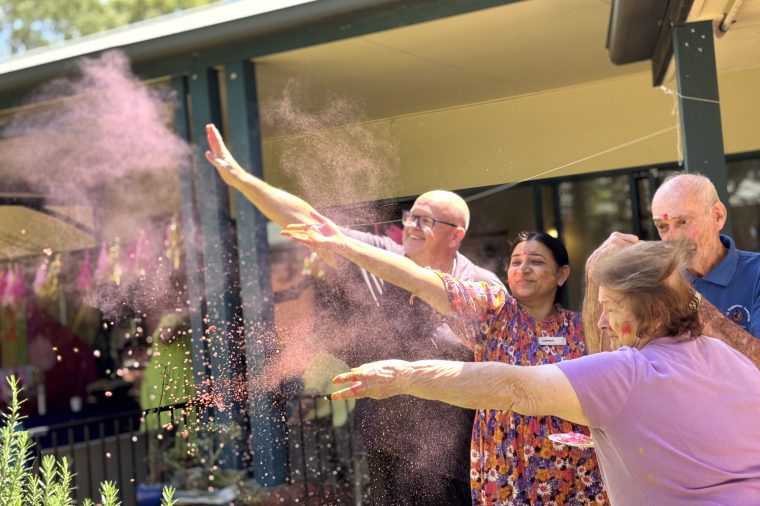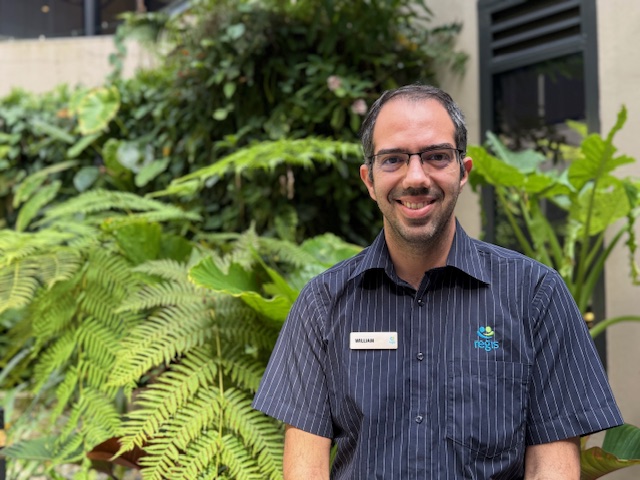
Residents at Regis Kuluin recently took a step back in time with an outing to the Historical Village in Caboolture. During the outing, residents had the pleasure of exploring this charming destination as they encountered fascinating stories and artifacts that encapsulated the rich history of the area.
The Caboolture Historical Village, located just north of Caboolture town centre, is a popular tourist destination with over 70 buildings and 110,000 museum pieces. Visitors can explore a street adorned with an old era post office, barber, butcher, and general store, as well as exhibits from the Queensland Prison’s Museum and the old Caboolture Hospital. The Village also features cottages, the old Caboolture Railway Station, and a Maritime Museum exhibit on ships from the First Fleet.
For residents, floods of nostalgia and memories of the past come alive during the outing, such as for Regis Kuluin resident Joyce, who discovered a recreation of her first washing machine. Standing proudly beside the artifact, Joyce shared stories about her past and recalled a time when doing laundry was a laborious task. Celebrating her 100th birthday next January, Joyce is a testament to a life well-lived and the profound changes she has witnessed throughout the years.
Another resident, Ron, was overwhelmed by a machine that held great significance to him. This particular apparatus had been instrumental in his youth, as he used it to grade and clear fire breaks at the tender age of 17. Little did he know that this humble beginning would pave the way for a remarkable journey across the oceans.
Ron went on to sell and promote Australian equipment in America, an achievement that made him proud of his roots. Standing next to the machine that had kickstarted his career, Ron shared tales of his adventures abroad, highlighting the impact of Australian ingenuity on an international scale.
Resident, Mary, also had a deep connection to the village’s agricultural past. As her fellow residents gathered around her, Mary took the time to explain the intricate process of separating cream on a dairy farm. With passion in her voice, she described how the cream was sold to the local butter factory, while the remaining milk served as nourishment for the family and the animals residing on the farm. Mary’s storytelling transported the group to a time when self-sufficiency was the backbone of rural life.
What made the visit to the Historical Village even more remarkable was the realisation that it is entirely run by volunteers. The dedication and passion of these individuals were palpable as the group explored the meticulously restored buildings and learned about the village’s history. Residents and employees were grateful for their efforts in preserving and sharing the stories of the past, allowing them to connect with the heritage that shaped the present.
After immersing in the bygone era, residents recharged at the village’s on-site café. Nestled amidst the quaint surroundings, they enjoyed a delicious lunch, savouring the flavours while reflecting on day’s experience. The ambiance was warm and welcoming, which was a testament to the community spirit that permeated the entire Historical Village.
As residents bid farewell to the village and its dedicated volunteers, they carried with them a renewed appreciation for the past and a deeper understanding of the lives lived before.

